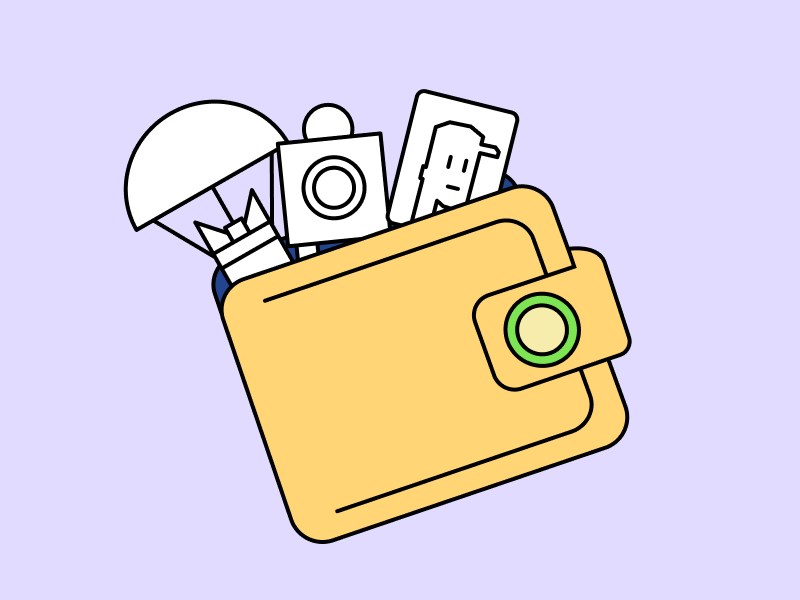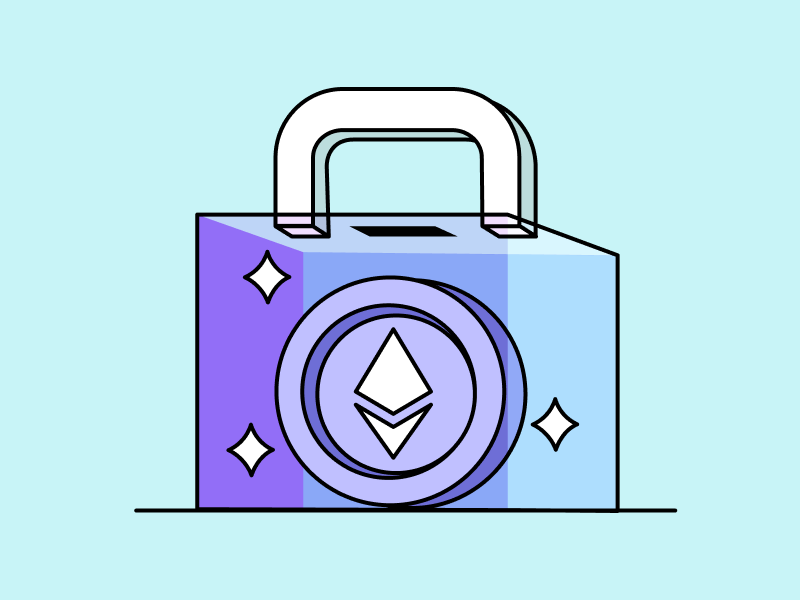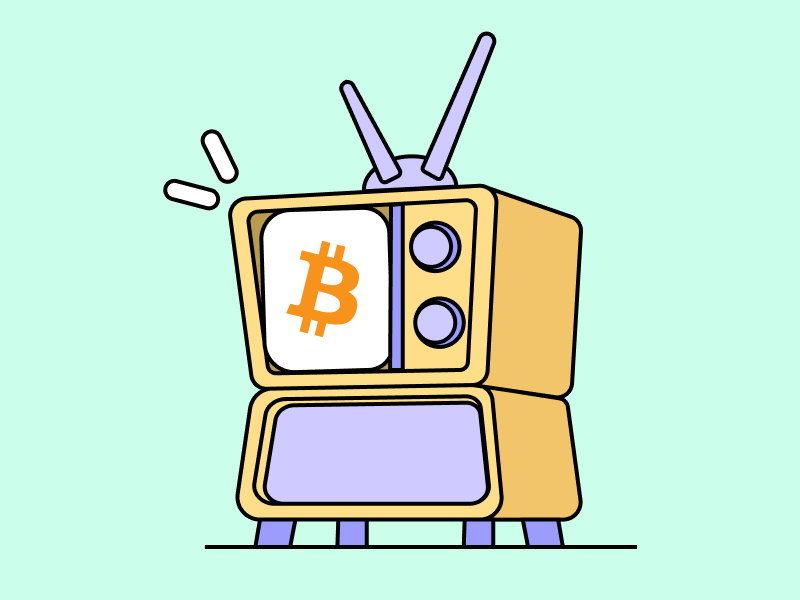8 Use Cases of Web3 Wallets in Blockchain Ecosystem

In the past, we relied on our email addresses to access social media and various applications. However, in the Web3 ecosystem, the role shifts to Web3 wallets. With a Web3 wallet, users can engage in a wide range of activities, including trading crypto assets, buying and selling Non-Fungible Tokens (NFTs), and securely storing data in decentralized cloud services. The Web3 wallet serves as the primary gateway to decentralized applications (dApps), enabling users to participate in various blockchain-based activities. In this article, we explore the diverse use cases of Web3 wallets.
Article Summary
- 🌐 A Web3 wallet is a digital wallet application designed for storing, managing, and transacting with crypto assets, as well as interacting with dApps and NFTs within the Web3 ecosystem.
- 🔐 Web3 wallets generally offer a high level of security since users store their private keys. This ensures that only the wallet owner can access and control their assets.
- 🤩 Users can utilize a Web3 wallet for accessing dApps, trading crypto assets, purchasing and managing NFTs, engaging in GameFi, exploring the Metaverse, participating in airdrops, staking in DeFi, and utilizing decentralized cloud storage services.
- ⛓️ Many Web3 wallets support multiple blockchain networks, so users only need one Web3 wallet to explore and interact with cross-chain dApps.
Overview of Web3 Wallet
Web3 wallet is basically a digital wallet application used to store, manage, and transact with crypto assets and interact with decentralized applications (dApps) and Non-Fungible Tokens (NFTs).
These wallets allow users to manage multiple digital assets on a single platform, eliminating the need for using separate wallets.
In general, Web3 wallets have a high level of security as users store their own private keys. Then, as technology advances, new types of Web3 wallets emerge, offering higher levels of security and more advanced features, including smart contracts wallets and MPC wallets.
Also read: Custodial vs. Non-Custodial Wallet – What is the Difference?
Advantages of Web3 Wallets
Web3 wallet can be used as the main gateway to enter various dApps. Users can explore the Web3 ecosystem directly and manage assets within it. Some examples of Web3 wallets are MetaMask, Rainbow, TrustWallet, ZenGo, and others.
These wallets provide several significant benefits to users. One of the main aspects is simplicity of use, where these wallets are designed with an easy-to-understand interface, allowing users who need in-depth technical knowledge to manage digital assets quickly.
In addition, Web3 wallets also offer another important aspect: anonymity and high security. In a crypto ecosystem where privacy concerns are often raised, Web3 wallets allow users to execute transactions anonymously, using only the wallet address without personal data.
Robust security is also emphasized with solid protection against crypto asset access through private keys or seed phrases. Thus, Web3 wallets have become a powerful and secure tool for managing digital assets and participating in the growing Web3 ecosystem.
Read also: Exploring the World of Web3 Wallet.
8 Use Cases of Web3 Wallets

As mentioned earlier, the Web3 wallet is an essential tool for unlocking and utilizing various aspects of the Web3 ecosystem. Here are some of the use cases of Web3 wallets:
1. Accessing various dApps
Web3 wallets allow users to connect to and interact with decentralized applications (dApps) without having to provide any personal information. This is because Web3 wallets use cryptography to verify the user’s identity and authorization to interact with the dApp.
DApps can be used for a variety of purposes, such as trading crypto assets, playing games, and accessing financial services. By using a Web3 wallet, users can enjoy the full benefits of the Web3 ecosystem without having to trust any centralized authority.
2. Crypto Asset Trading
Web3 wallets can be used to send, receive, and exchange crypto assets on decentralized exchanges (DEXes). Your assets can be securely stored in a Web3 wallet without anyone else accessing them.
Degens, or cryptocurrency traders who are willing to take on high risk in exchange for the potential for high rewards, often use Web3 wallets to search for tokens with significant upside potential on various DEXes, such as Uniswap, Pancakeswap, and Sundaeswap. This is because DEXes offer many tokens, including meme tokens, that are not yet available on CEXes.
Degen is a person who is involved in highly speculative and high-risk trading or investing in the crypto space. People doing degening are usually involved in newly released tokens or highly volatile assets.
3. Buying NFTs
Web3 wallet is a tool that allows you to verify ownership of unique NFT tokens. Using Web3 wallet, you can buy, sell, or exchange NFTs on various NFT marketplaces such as Opensea, Blur, Rarible, SuperRare, and similar platforms.
Moreover, the Web3 wallet can also store and display your NFT assets. It eases you in managing, sending or receiving NFTs from other Web3 wallets quickly and easily.
4. Accessing GameFi
GameFi combines various elements, including blockchain, smart contracts, NFTs, crypto assets, and dApps. With Web3 wallet, players can experience all these components seamlessly, decentralized, secure, and have full control over their activities.
Players can use the Web3 wallet within GameFi for several things. Here are the Web3 wallets use cases in GameFi:
- Accessing blockchain-based games.
- Storing characters and in-game items in the form of NFTs.
- Making payments and receiving rewards in the form of crypto assets.
- Interacting with other dApps for staking or yield farming assets acquired in the game.
5. Entering the Metaverse
Web3 wallets play an important role in the metaverse. The metaverse is a virtual world that combines elements from different platforms and games. Some examples of metaverse projects are Decentraland and The Sandbox.
The Web3 wallets serve as the user’s digital identity in the metaverse. This means that users can use their Web3 wallet to prove and manage their ownership of digital assets, characters, and virtual property without relying on a central authority.
6. Airdrop Hunting
For airdrop hunters, a Web3 wallet is essential to access various networks. They tend to try out new networks and protocols to qualify as airdrop recipients. Therefore, they usually use Web3 wallets that support multi-blockchains.
Web3 wallet can serve as a tool that facilitates verifying airdrop participants receiving and managing airdrop tokens securely and efficiently. It also allows users to organize and fulfil airdrop requirements more efficiently.
7. Staking on DeFi
Web3 wallet is essential for staking in DeFi (Decentralized Finance). Staking is locking crypto assets in the DeFi protocol for rewards.
Users use Web3 wallet to sign transactions, lock crypto assets (staking), store staking rewards, and manage crypto assets.
Not only staking, users can also borrow and lend crypto assets across various DeFi protocols. Thus, users can maximize the benefits obtained from multiple DeFi protocols. All activities in DeFi can be managed using the same wallet address.
8. Decentralized Cloud Storage (DCS)
Decentralized cloud storage (DCS) in Web3 wallets eliminates reliance on centralized storage service providers, which can be vulnerable to data breaches and service interruptions.
DCS allows users to encrypt, store, and access data, as well as offering exciting services such as decentralized animation rendering , video transcoding or reformatting (Livepeer), and more.
Some DCS networks allow users to use their idle storage capacity and receive crypto assets in return.
You can find out more about the Render and Livepeer projects at Pintu Academy.
Conclusion
Web3 wallets are a key element in the Web3 ecosystem, providing users with a secure and convenient way to manage, transact, and interact with various digital assets and decentralized applications (dApps).
Web3 wallets support multiple blockchain networks and play a crucial role in enabling users to manage crypto assets and interact with dApps across multiple networks. This concept refers to integrating the Web3 wallet with various existing blockchains, allowing users to access and manage their assets across the Web3 ecosystem with just one wallet.
References
- Pradeep Aswal, Top Web3 Real World Use Cases, Blockchain Council, accessed 26 September 2023.
- Chainlink Team, What is Web3? Chainlink, accessed 26 September 2023.
- Kaushik Dey, What is Web 3.0? Use Cases and Examples, Red Apple, accessed 26 September 2023.
- Akash Takyar, Web3 Use Cases and Applications, Leeway Hertz, accessed 27 September 2023.
Share
Related Article
See Assets in This Article
RENDER Price (24 Hours)
Market Capitalization
-
Global Volume (24 Hours)
-
Circulating Supply
-


